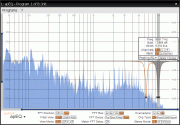leeperry
Galvanically isolated his brain
- Joined
- Apr 23, 2004
- Posts
- 13,922
- Likes
- 2,144
Quote:
sounds great!

| Originally Posted by decay /img/forum/go_quote.gif The EQ I recommend is IIEQPro by DDMF (**** DDMF-The home of Equalizers-DDMF ****) |
sounds great!



























